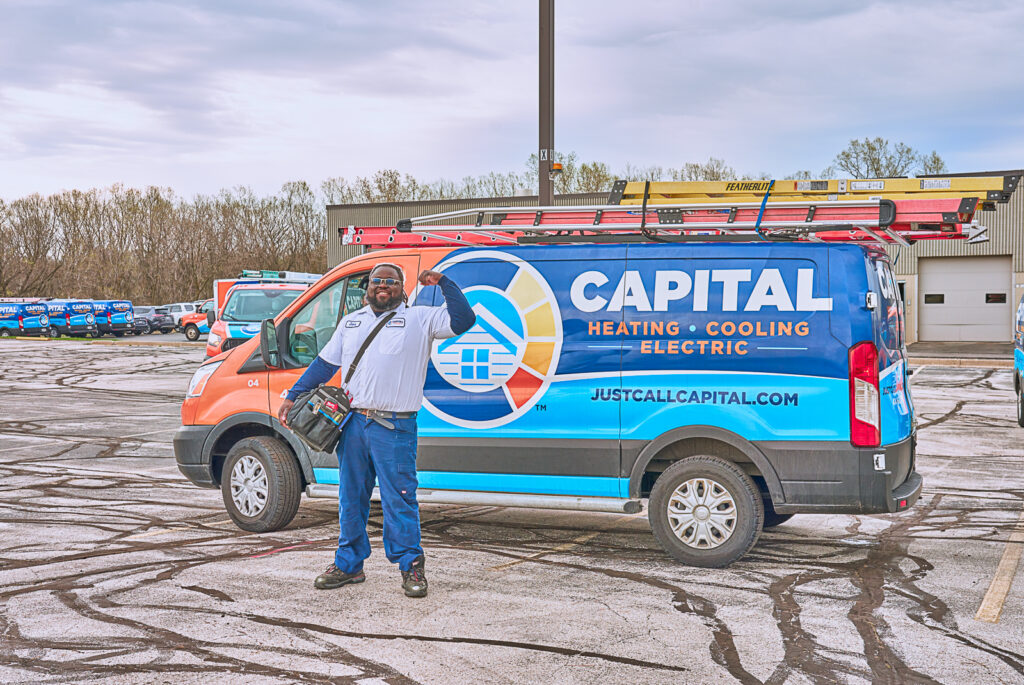October is Fire Prevention Month, making this a great time of year to make sure you are practicing fire safety and taking the proper preventative measures. Some common fire safety information includes double-checking your smoke detector’s batteries and not leaving any unattended open flames, like candles, burning. However, one of the leading causes of house fires is dryer fires caused by lint build-up.
Most people automatically clean out the lint trap when their clothes are done drying, but that does not remove all the lint from the dryer. Fortunately, with routine dryer vent cleaning and preventative care, you can protect your New Berlin home from the dangers of a dryer fire.
What Causes Dryer Fires?
Emptying your lint trap is probably second nature to you. After all, that’s where all the lint goes, right? Wrong. While a good amount of the lint and debris from your clothes gets caught in the lint trap, the rest of it goes into the tubes, ducts, and other hard-to-reach areas of your dryer. The corrugated hoses that run from your dryer vent to the outside hookup are the perfect space for lint to catch and accumulate, making it one of the biggest potential fire hazards in your dyer. Lint can also stick to the heating elements, making it the second biggest fire hazard.
Next time you are near your dryer, look underneath your lint trap. It’s highly likely that lint will peek back up at you. Lint is tricky and likes to hide where it isn’t welcome. While no technology or dryer on the market completely eliminates lint build-up, there are simple precautionary measures you can practice to give yourself peace of mind.
Dryer Vent Maintenance and Safety
Did you know that 13 people die and over 400 are injured every year from dryer fires caused by clogged dryer vents? You can greatly reduce your dryer fire hazards with these simple steps:
- Keep the interior area around your dryer free of clutter.
- Keep the exterior area around the vent free of debris, snow, or other obstacles.
- Use a lint brush or vacuum to remove accumulated lint from underneath the lint trap.
- Vacuum the back of the dryer and around the hoses.
It’s also important to check the material of your dryer duct. Vinyl and foil are combustible and spiral-wound, meaning they catch lint more easily. That’s the last combination you want near your dryer.
Upgrading to a solid metallic material lessens the amount of lint that stays trapped in the hose. If you don’t have a lot of space in your laundry room, don’t crush or kink the ducts against the wall to create more space, as it restricts necessary airflow. If you need more space, installing a Dryerbox can create airflow even when the unit is against the wall.
Signs You Need a Dryer Vent Cleaning
Dryer vent cleaning is an important part of maintaining a safe and efficient home. Professional cleanings help clear out all the sneaky lint that sticks around even after you clean your vents and unit. Your house size and how many loads of laundry you do impact how often your dryer vents need cleaning.
Since there is no one-size-fits-all recommendation for routine dryer cleaning, look for these signs that your vents are getting clogged up:
- The normal drying time for your clothes has doubled.
- Your dryer feels unusually hot, or you feel heat coming from the vent while it’s running.
- It smells like something is burning while your dryer is running.
- You smell mold around your dryer.
- There is excessive lint build-up around the vent opening or the ground below it.
Stop the Lint-vasion! Capital Is Here to Help.
Clean dryer vents are essential for maintaining a happy, healthy home. Not only do clean dryer vents lower your fire hazards, but they also help your clothes dry faster, extend the life of your dryer, and improve your home’s air quality.
If you suspect your dryer vents are filling up with lint or you want to upgrade your hose material, please call us today. We have specialized tools to clean out every last hint of lint and will make sure all your hoses and hookups are properly secured. Dryer fires are preventable with routine maintenance. We’re here to help take care of your home’s health and safety.


 Is a Whole-House Humidifier Worth It?
Is a Whole-House Humidifier Worth It?